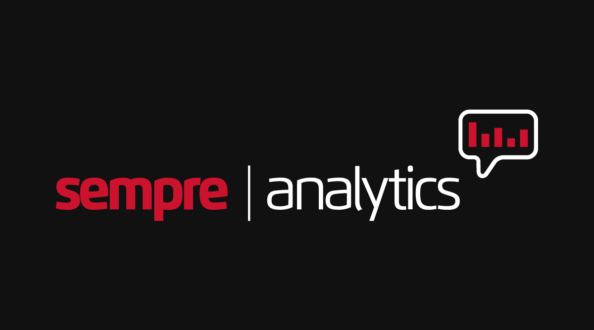
Practical Steps for Your Cloud Integration Journey
A recent blog from Sempre Analytics described Cloud Integration as the foundation of Data-Driven Success. This blog will explore some of the practical steps and considerations you need to make to enhance your cloud integration journey.
The importance of a good foundation for delivering data-driven success in an organisation, cannot be understated. Integration is crucial for ensuring smooth data flow across cloud systems, facilitating real-time insights and delivering the data required for smart decision-making.
Integrating data from various systems is not new. However, the complexity of the task has evolved as businesses transition from on-premises to the cloud and embrace a growing number of APIs, Apps and systems to support their business needs.

Where to start?
The first step in identifying the right Cloud Data Integration platform is to consider where the data is to be sourced from, how that data will be loaded, and how the data will be managed.
1. Understanding Your Data Sources
- Data Location: Determine if your data sources primarily reside in on-premises databases, the cloud, or a combination of both.
- Data Governance: Establish a data catalog and appoint subject matter experts and data stewards to uphold data quality and compliance standards.
- Data Policies: Implement clear policies for data classification, access control, and sharing to maintain security and compliance.
2. Addressing some good data management questions
Ensuring the business is engaged in the integration process, with tools for data cataloging, quality rules, and governance is key to successful integration campaigns. There are some key considerations when trying to address the complexities of bringing together data from a variety of sources.
- Mass Data Ingestion: Consider streamlining the replication of large data volumes, capturing incremental updates without re-querying extensive tables.
- Data Catalog: Enrich and document data integrations with input from subject matter experts to ensure clarity and logic.
- Data Quality: Standardise and monitor data flows while facilitating business collaboration on data quality rules.
- Data Access Management: Ensure compliance with data access regulations by managing access permissions and conditions for specific data.
Choosing the Right Integration Platform
When choosing an integration platform, keep these critical capabilities in mind:
- Versatile Data Handling: Make sure the platform can handle various data types seamlessly, including APIs and binary data. With businesses increasingly moving design drawings, inspection photos, customer documents, and scanned PDFs, this capability is crucial.
- Flexible Processing: Supporting both batch and real-time loading to meet diverse business needs.
- Connectivity: Check that the platform offers connectors to systems housing your data. It should seamlessly connect to cloud business systems like Microsoft Dynamics or Anaplan.
- Legacy and Modern Systems Integration: Connecting legacy on-premises applications with cloud-based corporate systems, data lakes, and traditional data warehouses.
- Data Loading Flexibility: Consider whether you require batch processing for overnight data loading or real-time integration for operational data. Choose a platform that offers the loading options that suit your needs best.
- Real-Time Synchronisation: Ensuring that changes made in one system are promptly reflected across others to prevent discrepancies in invoices, orders, bills of materials, and sales data.
A Deep Dive into Informatica’s Solution
Informatica’s platform integrates all these elements into a user-friendly, no-code, low-code environment.
1. Data Integration and Application Integration
Informatica’s platform handles both data integration (data movements, ETL jobs) and application integration (working with APIs, executing business processes). This dual capability allows seamless crossover between data and application tasks, along with data quality, catalog, governance and security all within the one unified platform.
2. Building a Simple Data Integration Pipeline
Here’s a high-level overview of creating a data integration pipeline using Informatica:
- Connecting to Data Sources: Informatica provides numerous pre-built connections. Users can easily set up connections to databases or other data sources without needing to understand the technical nuances of each system.
- Applying Data Quality Rules: Data quality assets, created and maintained by business users, can be easily applied to ensure data integrity. For instance, standardising task types or verifying date sequences.
- Data Cleansing and Transformation: Using visual tools, users can cleanse and transform data without writing code. This includes tasks like standardising values and applying complex business rules.
- Data Access Policies: Informatica’s AI capabilities automatically identify and classify sensitive data, ensuring compliance with data access regulations. This reduces the burden on data engineers to manage access manually.
- Preview and Validate Data: Users can preview the data to ensure that transformations and quality rules are applied correctly before finalising the integration.
3. Application Integration
Informatica also simplifies application integration:
- Creating APIs: Users can create APIs to expose internal data and processes to external partners. This includes handling authentication, error management, and other operational concerns.
- Automating API Management: The platform automates many aspects of API deployment, reducing the complexity and time required for these tasks.
Conclusion
In conclusion, modern cloud integration platforms like Informatica provide the tools and capabilities needed to manage complex data landscapes effectively. By leveraging these platforms, businesses can unlock the full potential of their data, connecting the dots to drive innovation and stay ahead in a competitive market.
Whether you’re just starting your integration journey or looking to enhance your existing processes, embracing these technologies will empower you to become a true Data Hero in your organisation.

About the author
With more than 25 years’ experience in technology solutions, Tom leads the Data & Analytics practice within Sempre. Tom has been with Sempre from the beginning and has worked across the full programme lifecycle to advise, scope, deliver, and manage, high-value programmes for our customers. He has a wide breadth of experience in all aspects of the data management lifecycle, including data solutions, strategy, governance, master data management and quality, having delivered transformational data solutions across multiple industry sectors.
Contact me today to discuss how to master data management.
Tom Clark












